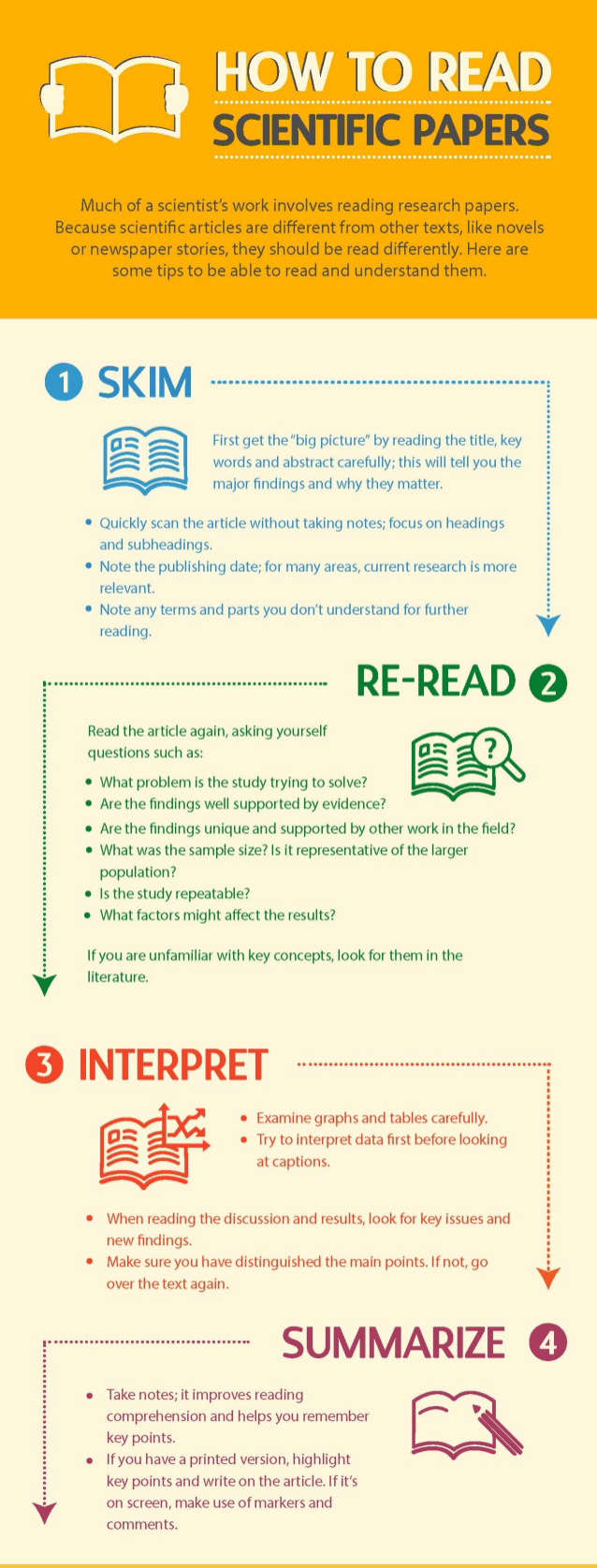Much of a scientist’s work involves reading research papers, whether it’s to stay up to date in their field, advance their scientific understanding, review manuscripts, or gather information for a project proposal or grant application. Because scientific articles are different from other texts, like novels or newspaper stories, they should be read differently.
Research papers follow the well-known IMRD format — an abstract followed by the Introduction, Methods, Results and Discussion. They have multiple cross references and tables as well as supplementary material, such as data sets, lab protocols and gene sequences. All those characteristics can make them dense and complex. Being able to effectively understand them is a matter of practice.
Reading a scientific paper should not be done in a linear way (from beginning to end); instead, it should be done strategically and with a critical mindset, questioning your understanding and the findings. Sometimes you will have to go backwards and forwards, take notes and have multiple tabs opened in your browser.
Here are some tips for reading and understanding research papers.







Leave a Reply